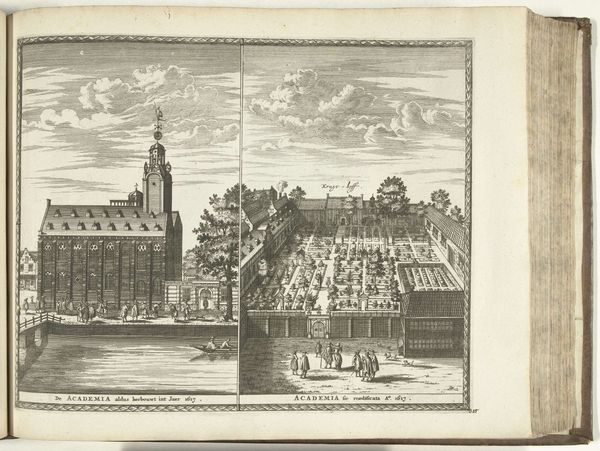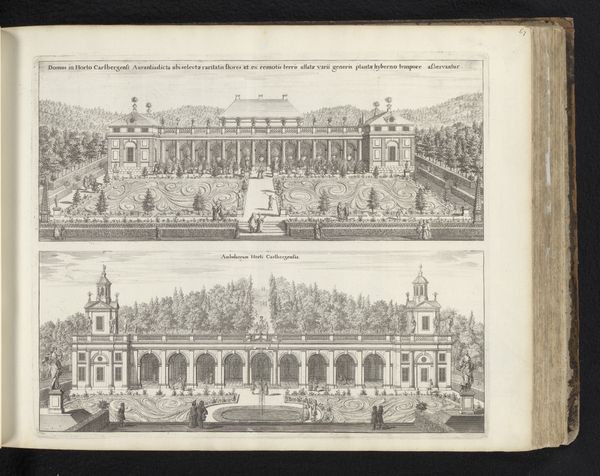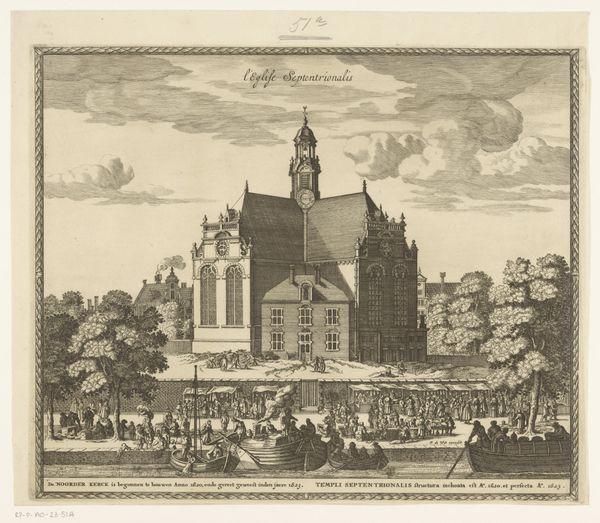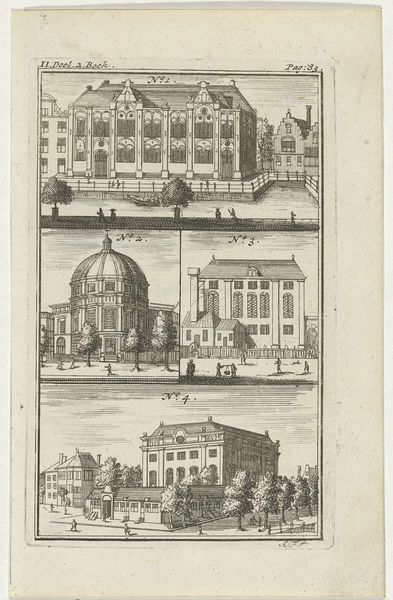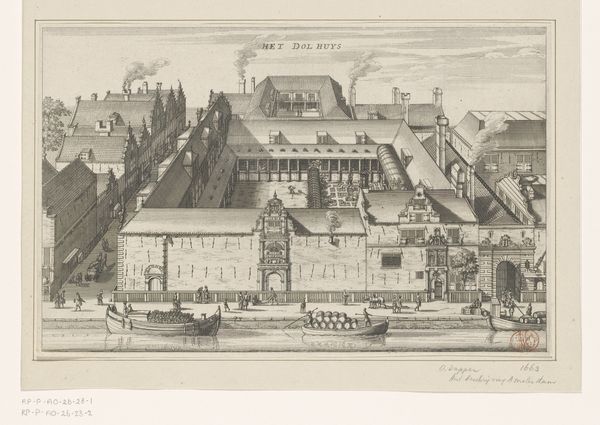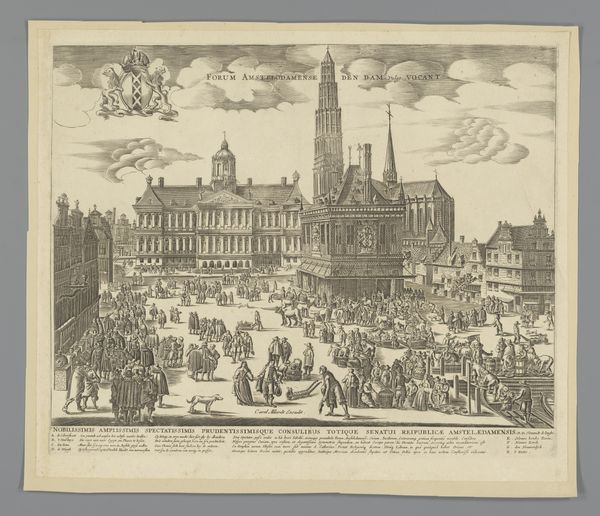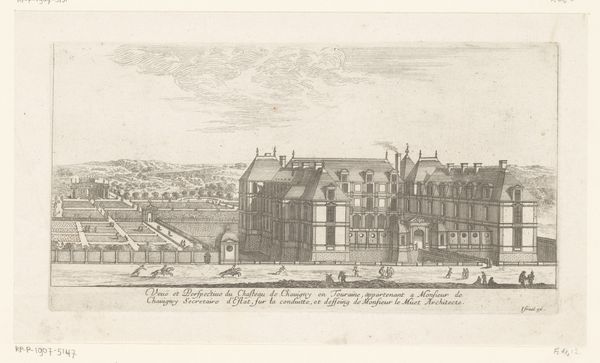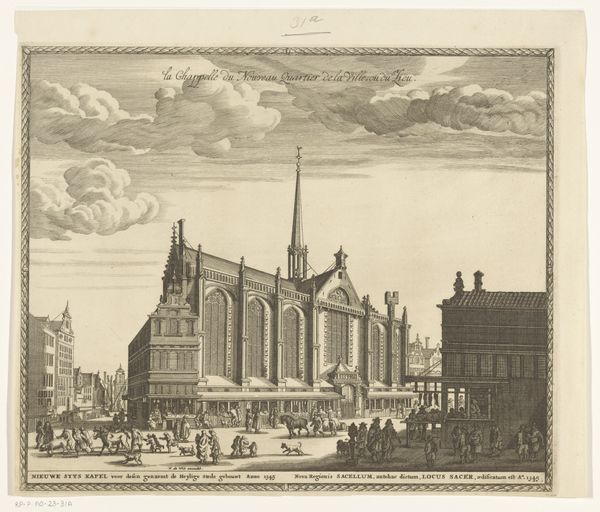
print, engraving
#
baroque
# print
#
landscape
#
line
#
cityscape
#
engraving
#
realism
Dimensions: height 250 mm, width 296 mm
Copyright: Rijks Museum: Open Domain
Curator: What immediately strikes me is the sheer density of detail. It’s like looking at reality under a microscope, every brick and leaf accounted for. Editor: That's an interesting perspective. It is definitely rendered with meticulous accuracy. This print, made in 1675 by Christiaan Hagen, is called “Rand van de Grote Hagen (onderdeel zijkant)," which translates to something like "Edge of the Great Hague (side part)." It's a cityscape presented as a fine engraving. It showcases the Academy building on one side and the "Kruythoff," a courtyard, on the other. Curator: "Meticulous accuracy" might be one way to put it. Another might be obsessive compulsive! The symmetry of those manicured gardens! The Academy on the left looks, by contrast, almost drab. Editor: Perhaps drab isn’t the right word, but I do see what you mean about the contrast. It is quite telling. The Academy, though architecturally impressive, is depicted as a bustling site of commerce and, most importantly, intellectual work, hence the scholars who are lingering outside, while the garden symbolizes something altogether different. Curator: Intellectual work... Right. Maybe that’s what the artist intends to say! Like the mind as a public building versus nature as a contained refuge? I mean, is it a longing to tame the messiness of thought? Editor: Precisely! Or even a wider discourse. Remember that this was the Dutch Golden Age, a period of immense wealth acquired through global trade. A courtyard such as the "Kruythoff" was a visual marker of social class and prosperity and functioned as a kind of private world, as such its accessibility would be undeniably unequal. Who got to enjoy the aesthetics of nature, and what did they think about, in their spare time? Curator: Ah, and here I was just thinking about nice, simple aesthetics. So even an innocuous garden shot holds a mirror to privilege and inaccessibility! Editor: Exactly. Art, at its core, tends to make those mirrors for us, especially when looking back. The contrast in visual cultures—order versus... a different kind of order? is an invitation. And I like being invited to engage. Curator: Well said. As an artist, that subtle dialogue you’ve introduced changes my reading—or feeling—of the image significantly. Thank you for helping see this image a little deeper.
Comments
No comments
Be the first to comment and join the conversation on the ultimate creative platform.
